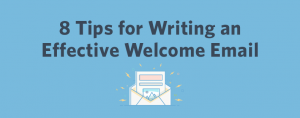
If you’ve ever been responsible for a content marketing campaign, you’re probably sick of writing low-performing blog posts. By low-performing, I mean posts that don’t pull their weight over time. You might get a burst of interest after they are first posted, but then they decay in readership until they are useless.
The usual quest for a content marketer is to create content that people will refer to again and again, commonly known as evergreen content. But Hubspot has identified another kind of blog post that builds on the evergreen concept into something that’s even better than evergreen content.
It’s called a compounding blog post. The reason it’s called compounding is that the number of visitors to it grows over time. This is opposed to decaying blog posts that have an initial spike of readers and then decline over time.
Most blogs that write regularly do hit upon a few subjects that resonate strongly with the audience. Hubspot studied 20,000 blog posts to identify which ones were compounding and why. We’re going to go over some of that research and how you can leverage it for your content marketing campaigns.
First, some initial statistics about compounding posts found by Hubspot:
- About one in ten posts in their samples were compounding.
- That 10% drove about 38% of all traffic in the samples.
- Thus, one solid compounding post can have the same effect as six decaying posts.
Turning your posts into compounding posts can do more than just drive up readership. It could also reduce your workload and make your conversion strategy much stronger. There were some blogs that they studied that only had a tiny (under 50) number of posts for years, but the posts were so strong that they didn’t need new content to generate traffic. They just had to update the information as it became out of date.
Let’s go into what makes a compounding blog post and how you can tie it into your content marketing campaigns.
Three Types of Posts

There are three broad types of blog posts. The first is topical posts. These are posts that cover a single time-dependent topic like a news story. These can often generate an initial buzz because of their new information. Most viral content falls into this kind of post. However, once the information is consumed by the reader then it is no longer of interest. Thus, topical posts are rarely compounding.
The second type is a post with a narrow focus specific to an audience. A niche post in other words. This type of post might generate strong interest within your niche and get regular readership over time. However, due to the specialized focus, it’s not going to compound with more readers because it is too specific or technical to break out of the niche group. A lot of evergreen content can fall into this category. Posts in this category will either decay or fall into a steady state of regular readership for some time.
The third type, and the one most likely to compound, is what Hubspot calls the broad topical post. This type takes a broad subject area within a niche that has mass appeal and answers a common question. The best evergreen content falls into the third type.
Surprisingly, it’s not so much the topic but how you approach it with your writing that matters. Here is an example of all three for a content marketing blog:
- Topical: New study reveals that ROI is hard to measure for SMBs
- Narrow: Configuring Google Analytics to measure ROI of different audience segments
- Broad Topical: How to measure content marketing ROI once and for all
The first one might reassure a marketer that ROI measurements are harder than expected, but has no use beyond that. The second is very useful in the right circumstances, but most people aren’t interested in analytics and audience segmentation. But the third one does appeal to many people. Marketers, executives, accountants, small business owners, and anyone paying for content marketing could find the information that article to be of use.
One compounding post does the work of six decaying blog posts.
Start With The Title
Writing a compounding post is a little like combining SEO, good desktop publishing principles, solid writing, and having a proper content marketing strategy to leverage the post. For SEO, the place to start is the title. What gets someone to click on a title?

Search technology has become good enough that many people use natural language queries. A natural language search is like asking someone a question. Instead of a query like “content marketing ROI measurement”, a natural language query reads like “how do I measure ROI in a content marketing campaign”.
Compounding posts make their titles similar to natural language queries. These language queries must be easy to understand and relevant to as many people as possible while still relating to the topic the post is about. A landing page example would be “How to create a landing page that converts for your website.”
There are some hidden keys that Hubspot found in its study of titles. Of the posts that compounded, there were certain words that turned up in the titles again and again. These include:
- How – 11%
- Your – 10%
- What – 5%
- Best – 4%
- Why – 3%
- Tip – 3%
If you combine these words with search suggestion results, you’ll have a powerful tool to create possible topics to write about that could compound. By typing a keyword into Google, you’ll get what people are searching for at the time. Here’s what comes up for “landing page” as of this writing:
- Landing page examples
- Landing page for blog
- Landing pages wordpress
- Landing page templates
- Landing page builder
- Landing page best practices
Combining the suggestions with the query words above, you can create examples like:
- Tips for WordPress landing pages that convert well for your business
- What are the best practices for B2B landing pages?
- Write a landing page for your blog in under two hours
- What is the best landing page builder? (Pagewiz, of course!)
Another factor found was that the best performing titles have 11-13 keywords. Having fewer than six works and more than 14 caused dramatic drops in response.
Format of a Compounding Blog Post

Any marketer knows a good title can attract, but it’s the content that keeps the reader there. So, what attracts readers to stay on a page and finish an article? Newscred Insights says that the average reader only spends 37 seconds on a blog post. Therefore, the first thing you have to do is make the reader believe that you have the answer promised in the title before that time is up.
Readers of compound posts need to come away with something useful that they can apply.
If you can start to answer the question within the first two scrolls of your article, you’ll likely get the reader to keep going through the whole thing. But there are other things that also contribute to compounding. Here’s a short list.
Images – Readers love images, and not just because of pretty pictures. Pictures help break up the flow of text and give the eye a break. They can illustrate points that are difficult to grasp by reading alone. A good infographic can perform double duty by summarizing smaller pieces of information so you can use text to explain deeper concepts.
Length – The key thing is that it needs to be long enough to treat your topic thoroughly. Blog posts are getting longer with the average blog post around 1,000 words in length, but some audiences are content to read articles that are double that length or even more. It’s worse to be too short than too long. You will need to study your audience’s responses to articles to find the sweet spot.
Links – Some subjects are too broad to be covered in one post and still fit good length requirements. Creating several related posts and using internal links to guide people to more in-depth information (or to a landing page with a product that goes in greater depth) can fix this. Another tactic is to create small (200-word) posts that explain a single tricky concept to educate your reader, then link to that in your compounding piece when you first use the term. The financial website Investopedia uses this to great effect. By linking this way, you also keep people on your site longer.
Bullet points – To conserve length while retaining high information, use tactics like bulleted lists to deliver a lot of information in a short space.
Use headings – Headings work like pictures in breaking up large chunks of text, but they also serve another purpose. They help a skimming reader jump down to the part of your explanation that most interest them. A reader may already be experienced with one part of your topic and will look for new insights. Good headings will help them.
Writing Compounding Content
By far, the most important thing that your content needs to provide is something that the reader can take away and use besides just another bit of trivia. Readers of compound posts need to come away with something useful that they can apply. Note that the top query words in titles were “how” and “your”. We associate the word “how” with utility. By combining it with “your”, it implies that the reader can do something with the information within. The word “tips” also implies something of utility that the reader can use.
Another type of compounding posts allows readers to select between different similar options. Finding out what the “best” option is between several and explaining why is a great method for compounding. For instance, an ongoing compounding post could review different types of products. This type of post can be updated over time quite easily and still remain useful. Consumer Reports has been using this tactic for years.
Compounding posts can also break down difficult topics in a way that anyone can understand. If you’re not a Redditor, you may not know the acronym ELI5. It means “explain like I’m five-years-old.” It’s a popular concept for good reason. It’s tough to find someone that can break down a complicated topic and explain it. If you can do this for your audience, they will come away feeling more educated about your niche. Use the “why” and “what” keywords with this kind of post.
Crafting a Compounding Strategy
Creating a compounding post is more than just a snappy title and having the features above. They have to be part of an overall strategy. A great place to start is an FAQ for your business. Every business will encounter certain questions from their customers over and over again. Taking one of those questions and then going one or two steps beyond is an excellent way to start building compounding posts. You can query your sales team or customer service department to see what people are asking. You can also use the suggested search technique we talked about earlier.
If there is something about your business that is complex to explain, splitting that into one or more posts and using the techniques in this article can help people understand it and raise your reputation in the process. Remember that what you might intuitively know from your business experience might be completely confusing to a newcomer. Teaching people how to do something related to your product, service, or niche is another great place to build these kinds of posts.
Sometimes a topical post may be needed when something big shakes up your field and needs a report. But the best month-over-month posts are ones that have utility over time and are useful and easy enough to understand that people will want to pass them along. Take this technique and run with it. You may be surprised at how fast your traffic numbers rise. Link your compounding posts to your landing pages and you may be surprised at your revenue as well.
Digital & Social Articles on Business 2 Community
(45)









